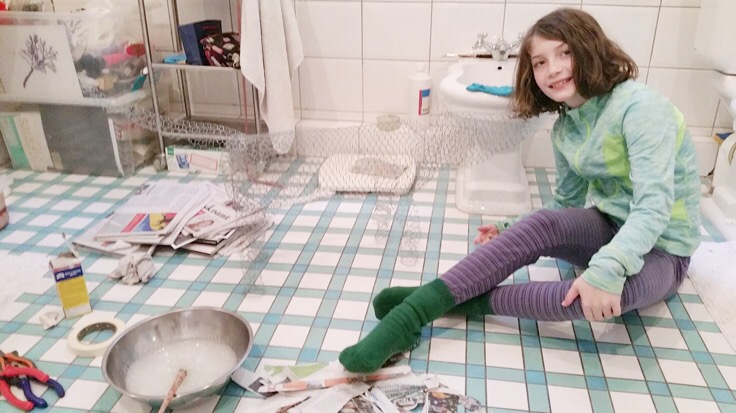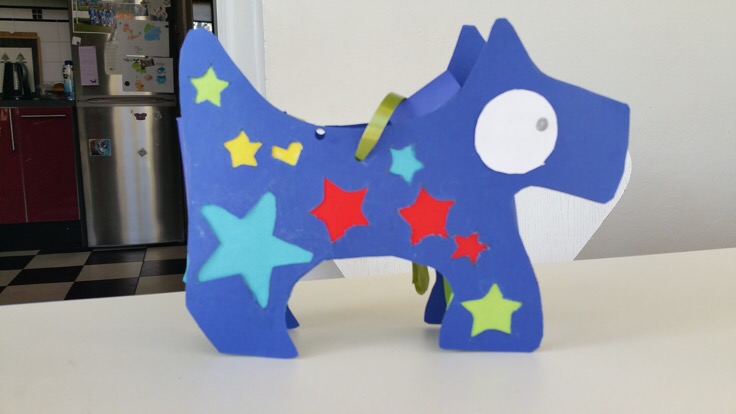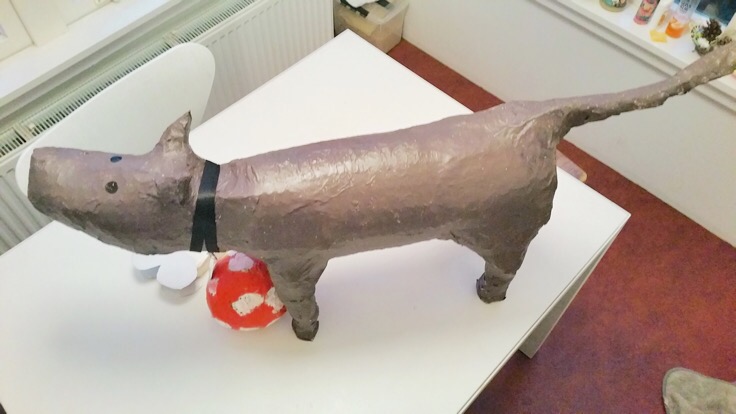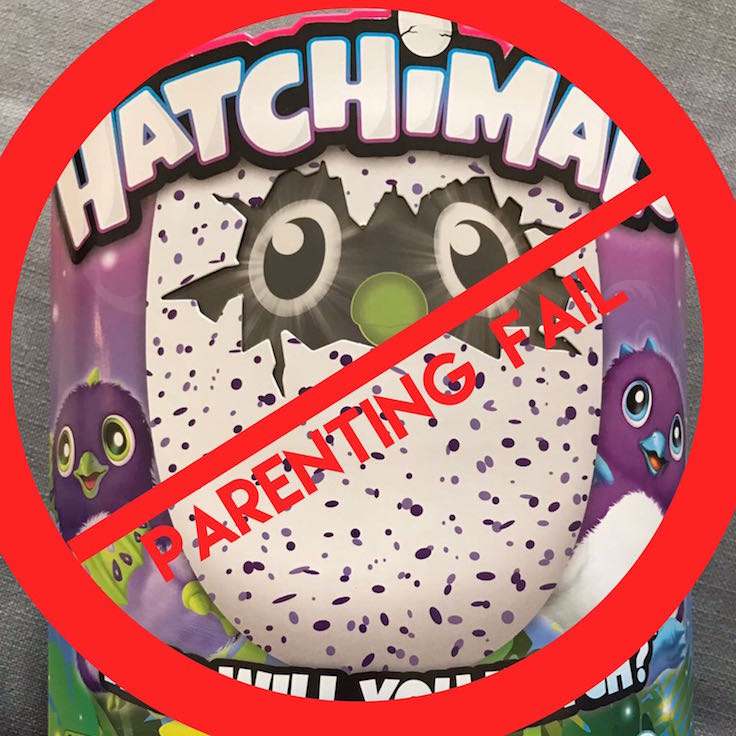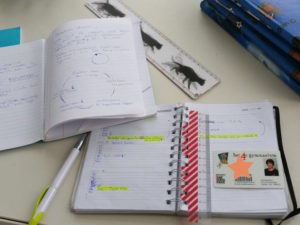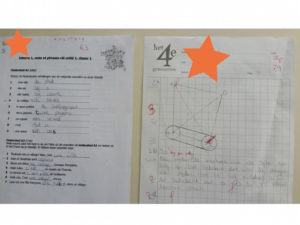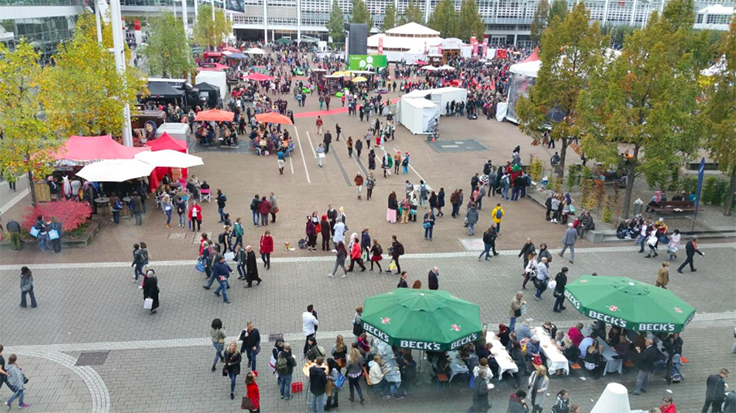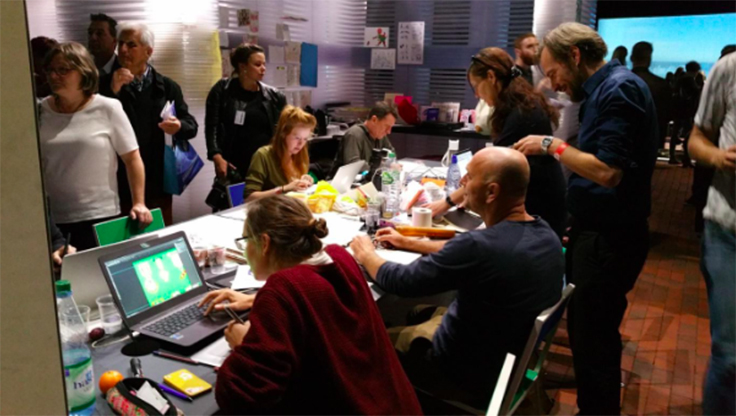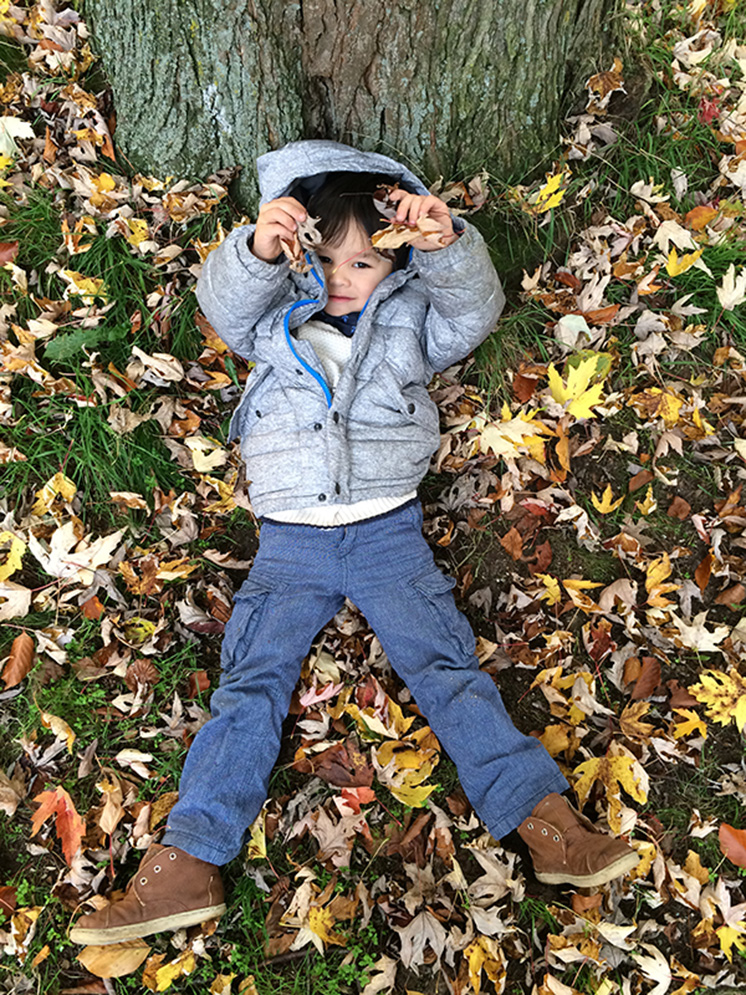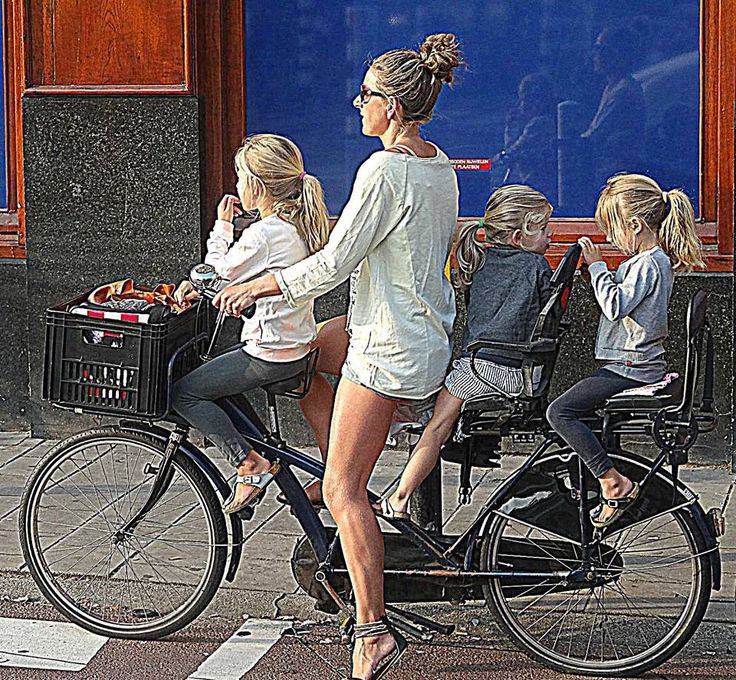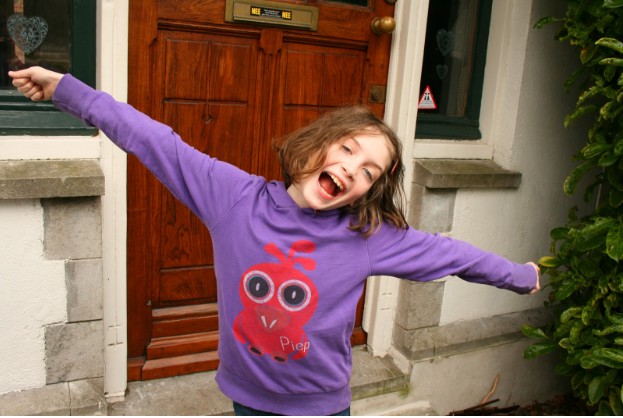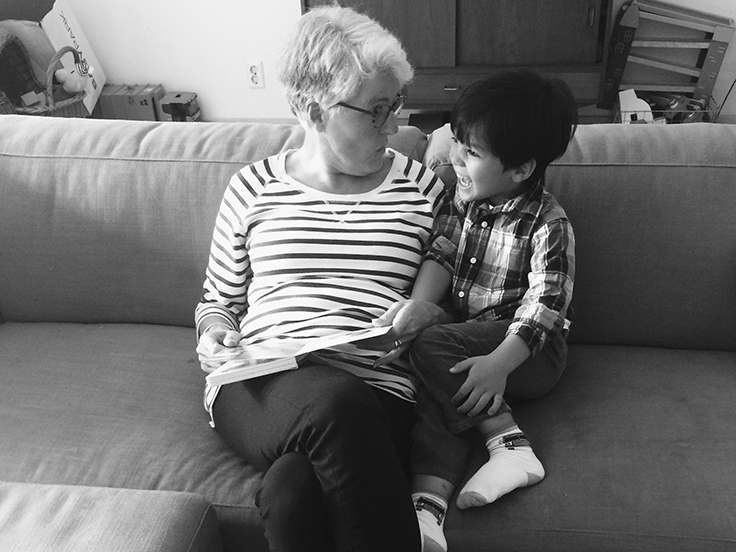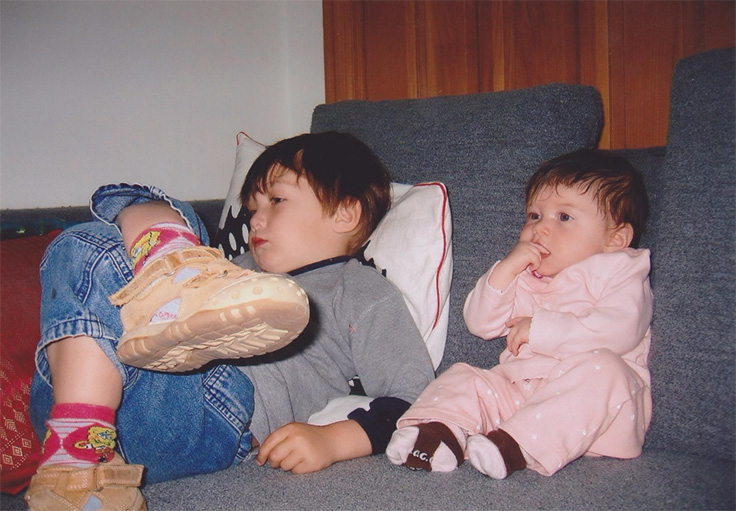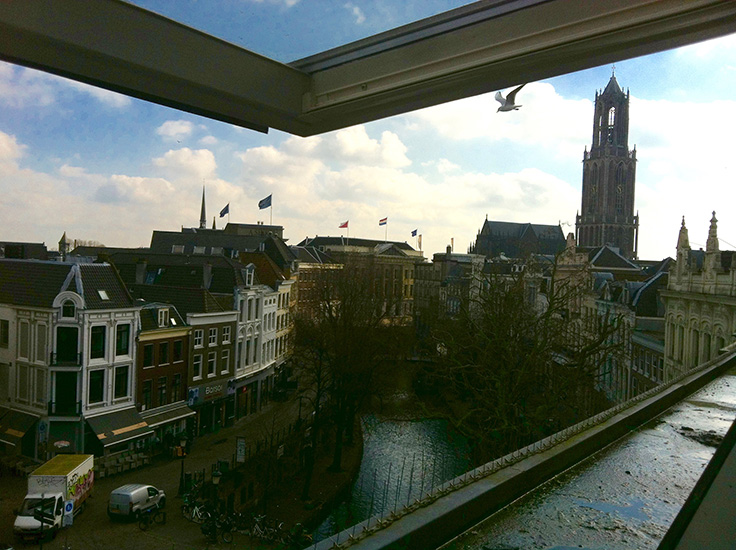One of the skills I never thought I’d need so much as a wannabee Dutch parent is crafting. Growing up in England in the seventies and eighties, I did plenty of arts and crafts stuff as a kid. My mother went through a hippy phase of teaching me and my brother to collect, spin and weave wool (she still has the spinning wheel at home), to craft corn-dollies out of straw (truly hideous things which attracted mites!) and to sew and knit. At school, we made arts and crafts projects out of toilet rolls and crepe paper. But I never expected these crazy skillz to equip me for my kid’s childhood in the new century.
Glue and coloured paper and crappy-looking creations are a major part of Dutch day-care and primary school. Both the Dutch childminders we have had, have spent the majority of their time knutselen – a handy Dutch verb for doing craftwork – with the kids too. And they’ve loved it. They’ve done more than I ever did as a kid, despite my seventies-style mum. My daughter is currently a big fan of origami and can spend hours in the kitchen making little birds. It’s got to be preferable to spending hours on the iPad (her other main ‘hobby’).
The parenting crafting challenge comes in the autumn in Holland. First there’s St Maarten’s Day on 11th November which requires a home-made lantern. (St Maarten, patron saint of Utrecht and Groningen – aka Saint Martin of Tours – was a Hungarian-born bishop who famously donated half of his cloak to a beggar.) The children go from door to door, singing songs as they hold their paper lanterns aloft, and collecting sweets. The lanterns are relatively easy to make and don’t require much adult intervention, thank God. Here’s what Ina made on her own this year.
The real test is Sinterklaas (celebrated on 5th December) when children draw lots at school to see who will make a ‘surprise’ for a fellow classmate. A surprise is basically a fantasy holder for a hidden gift (worth no more than €3,50 according to the brief). But if you’d never seen one, your eyes would pop out at the array of expert-looking DIY animals, computers, play stations, sports paraphernalia et al displayed in the class on the day the surprises get handed it. To a foreign parent, it is a truly daunting sight. How the hell do the kids make these things? And how the hell do their parents know how to help them? Checking out Pinterest will give you an idea of the skill and complexity I’m talking about.
The first year I just let my son wing it on his own. He made a cardboard climbing wall covered in little modelling clay penguins that looked really cute to me, but somehow didn’t fit in with what the other kids had made. It wasn’t “boxy” enough, a fellow parent tipped me off. The next year he made a cardboard guitar and then it was my daughter’s turn. A skipping rope with massive handles fashioned out of papier-mâché covered balloons and toilet rolls and then painted, looked pretty credible. The gift was hidden in one of the handles. Last year she made a house and a garden on top of a cardboard box base and the girl who she gave it to couldn’t hide her disappointment. “You can always tell which kids have foreign parents,” I heard one mum murmur. I’d finally found the one area of parenting where Dutch parents seemed a little competitive.
And so this year, in her last year of primary school, Ina is determined to ‘win’ at surprise-making. It’s her last chance to make a splash and so it’s been all hands on deck. She decided to make a life-sized dog with a football out of chicken wire and papier-mâché. The gift would be hidden inside the ball. I spent an entire day consulting Dutch parents, googling and purchasing chicken wire, tape and wallpaper paste. At the weekend, we put on our gloves and attempted to bend bits of wire into the shape of a dog, based on a drawing of a friendly-looking dog Ina had found online. It took hours and was one of the most difficult things I’d ever attempted in my life (in craft terms). Just getting the dog to stand on all four legs took us about an hour and a half.
Trying to ignore the fact that it looked like a pig with a long tail, we covered the frame in papier-mâché and left it to dry – which took three days, there was so much glue! (We always do this kind of stuff in the bathroom to make clearing up easier). Then Ina painted everything with acrylic paints and this is the result. It’s not too bad but will her classmate like it? And will anyone comment on her non-Dutch mum?

